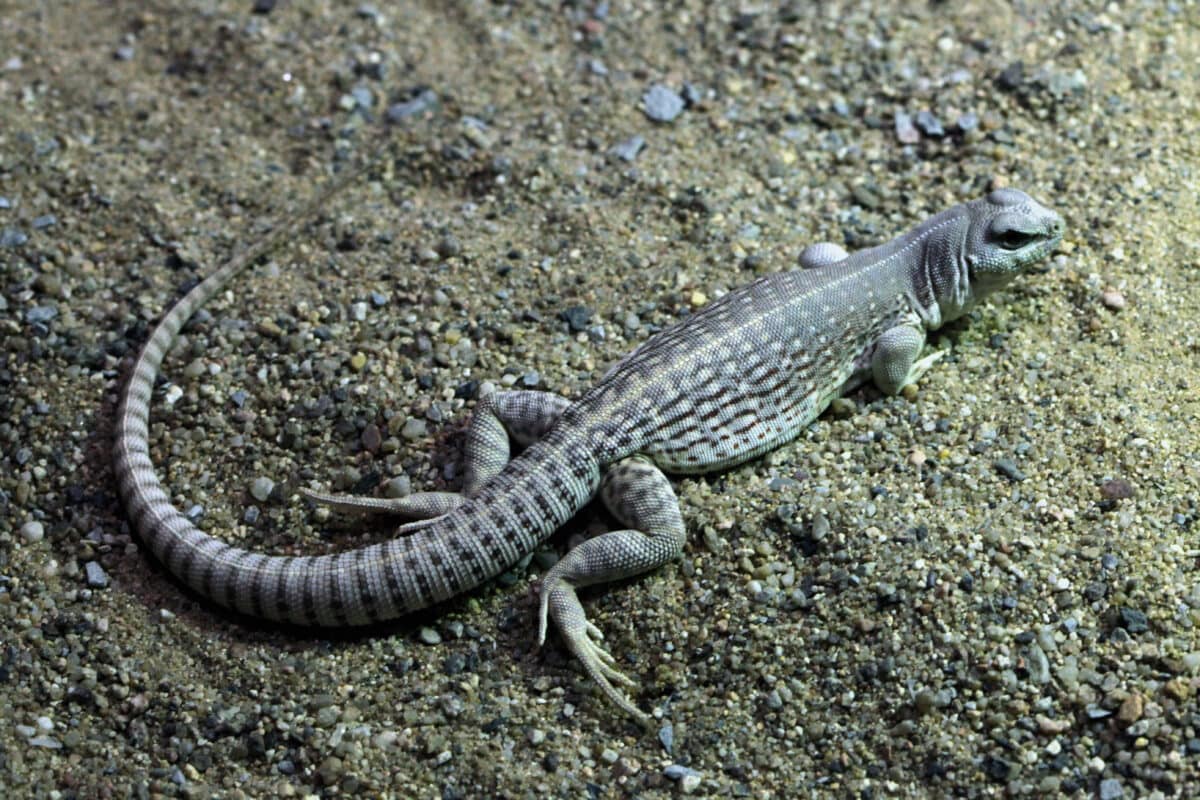The vast deserts of New Mexico are home to an extraordinary array of wildlife, with one of the most fascinating being its colorful lizards. These creatures not only add vibrancy to the arid landscape but also showcase intriguing adaptability and behaviors. This article will explore the diverse species of vibrant lizards that thrive in New Mexico’s desert environments, highlighting their unique characteristics and survival strategies.
Deserts of New Mexico: A Unique Habitat

The deserts of New Mexico, including the Chihuahuan and the Sonoran, provide a challenging yet richly diverse ecosystem that supports a variety of wildlife. Characterized by extreme temperatures and scarce water sources, these deserts require their inhabitants to adapt in remarkable ways. Among the most visually captivating of these desert dwellers are the colorful lizards, which have evolved to thrive in such harsh conditions.
The Colorful Collared Lizard

Among the most striking lizards found in New Mexico is the Eastern Collared Lizard, notable for its vibrant blue and green scales, contrasting with a distinctive orange or yellow coloration around the neck. These lizards are particularly captivating not just for their appearance but also for their impressive speed and agility. Known to run on two legs, the collared lizard is an adept predator within its desert ecosystem.
American Southwestern Icon: The Desert Iguana

The Desert Iguana is another colorful inhabitant of New Mexico’s deserts. Exhibiting a light brown or gray color adorned with darker spots, it often reflects the hues of the desert sands. Known for its hardiness, the Desert Iguana can withstand high temperatures that many other species cannot, making it a quintessential survivor of the harsh desert environment.
Adaptations of the Common Side-blotched Lizard

The Common Side-blotched Lizard, despite its small size, is abundant throughout the deserts of New Mexico. It displays a range of colors, from bright blue to vibrant yellow, which plays a crucial role in their survival strategies. These lizards are known for their territorial displays and complex mating behaviors, which are often color-coded, adding to their visual appeal.
The Mesmerizing Mediterranean House Gecko

Although not native, the Mediterranean House Gecko has established itself in New Mexico. These nocturnal lizards are known for their translucent skin and ability to change color slightly to blend in with their surroundings. While less colorful than some native species, their unique adaptability makes them a fascinating part of the New Mexican desert ecosystem.
The Majestic Blue Spiny Lizard

The Blue Spiny Lizard, with its iridescent blue scales, is a spectacular sight. Well-adapted to arid environments, this lizard utilizes its robust limbs to climb trees and rocks in search of food. Its bold blue coloring serves as a warning to predators about its spiny and unpalatable nature, a perfect example of evolutionary design at work.
Behavior and Diet: Key to Survival

The vibrant lizards of New Mexico’s deserts have evolved varied diets and behaviors to suit their environment. Insects, plants, and smaller lizards often constitute their primary food sources. Their behavior is equally adapted to the necessity of survival, from territorial displays to nocturnal activity, each species has found ways to thrive against the odds.
Conservation Efforts in New Mexico

While the desert lizards of New Mexico are resilient, they face threats from habitat loss and climate change. Conservation efforts are crucial to ensure these vibrant species continue to embellish the desert landscape. Protecting their natural habitats and mitigating environmental impacts are primary goals for regional conservationists.
Interaction with Humans

Lizards are often considered beneficial to humans due to their consumption of pests. However, increasing human activity in desert areas poses disruption risks to their natural ecosystems. Responsible interaction and understanding of these creatures can lead to mutual benefits and reduce negative impacts on their habitats.
Ecological Contributions of Desert Lizards

Lizards play a significant role in the desert ecosystem, acting as both predator and prey. They help maintain the balance of insect populations and serve as an important food source for larger animals. Their presence indicates a healthy ecosystem and their survival signifies successful adaptation to environmental changes.
Fascination with Desert Lizards in Popular Culture

The unique appearance and behaviors of New Mexico’s lizards have not gone unnoticed in popular culture. From folklore to media representations, these creatures continue to captivate human imagination, often portrayed as symbols of resilience and adaptability.
Conclusion: Conserving a Vibrant Legacy

The colorful lizards of New Mexico’s deserts are more than just beautiful additions to the arid landscape. They embody the resilience and adaptability required to survive in one of the world’s most challenging environments. As we continue to study and appreciate these fascinating creatures, it is crucial that conservation efforts remain a priority to preserve their vibrant legacy for future generations.
- This Bird Sets Forests on Fire - August 17, 2025
- Orcas Have Regional Accents - August 17, 2025
- The Largest Group Migration in the Animal World - August 17, 2025
